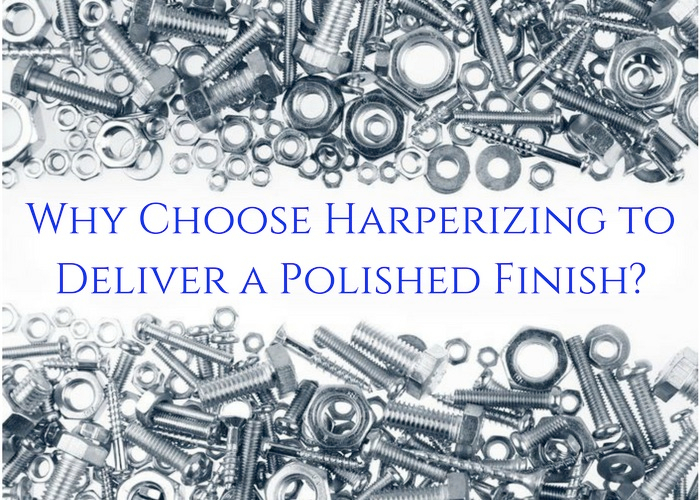Manufacturers have more options than ever when it comes to metal finishing. One process is harperizing, also known as centrifugal finishing. While less common than shot peening or shot blasting, it is no less effective than other mass finishing techniques — in fact, many industries rely on harperizing to deliver a polished finished to their most delicate metal pieces.

What is Harperizing?
Harperizing is a metal finishing process that harnesses powerful centrifugal forces (commonly known as G-forces) to remove imperfections from metal parts.
If you’re unsure what a centrifuge is, think of a washing machine: as it spins, the inertia draws the garments away from the centre of the barrel to the sides and pushes water out through the holes. Centrifuges are machines that spin to generate that centrifugal force.
A harperizer finishing machine has two to four cylindrical containers mounted to a rotating barrel. When the rotating barrel spins in one direction, the cylinders spin the opposite, generating strong centrifugal forces within each container. This video offers a low-speed demonstration; the actual process occurs at much higher speeds.
We place the metal workpieces into the cylinders with water and an abrasive media. As with shot blasting and shot peening, the choice of media varies depending on the piece and the desired finish.
Once the cylinders are 50-90% full, we switch on the harperizer and let the centrifugal forces do their work. The force drives the workpieces and abrasive media together repeatedly to deliver a polished finish.
Why Choose Harperizing to Deliver a Polished Finish?
What makes harperizing stand out from other mass metal finishing processes like shot blasting and deburring? In many cases, centrifugal finishing is the most effective way to reach corners and edges on small or delicate workpieces. The action generated by the centrifugal forces are often gentle enough to deliver a fine, polished finish without damaging the parts in question. This makes harperizing a technique of choice in the medical device industry, along with the aerospace and automotive industries.
The second advantage of centrifugal finishing is speed. Harperizing can deliver results in far less time than other finishing processes, like conventional tumbling and vibratory finishing.
Other Applications of Centrifugal Finishing
Harperizing can also be used for descaling, corrosion removal, and deburring. It is often a pre-treatment to prepare metal workpieces for painting, powder coating, or electroplating. Deburring services are key to ensuring other finishing processes work properly, and centrifugal deburring is often the best choice for small or delicate parts.
Harperizing and Other Mass Finishing Techniques
When manufacturers in Ontario need to make their products shine, they turn to us. Latem has been in the metal polishing business since 1977. In fact, we got our start polishing awards for the family trophy business! Since then, we have grown to service thousands of pieces in all kinds of industries, from automotive to aerospace.
While we specialize in mass finishing, we do service some smaller operations as well. Reach out to us if you have questions about mass metal finishing in Ontario.

